A Hedged Market Shrouded in Fear: Bitcoin May Require a Longer Consolidation
The market has not yet bottomed out, so be cautious when buying the dip.
The market has not bottomed out; exercise caution when buying the dip.
Written by: Chris Beamish, CryptoVizArt, Antoine Colpaert, Glassnode
Translated by: AididiaoJP, Foresight News
Bitcoin is trading below key cost basis levels, indicating demand exhaustion and weakening momentum. Long-term holders are selling into market strength, while the options market has shifted to a defensive stance, with increased demand for put options and heightened volatility—signaling a cautious phase before any sustainable recovery.
Summary
- Bitcoin is trading below the cost basis of short-term holders, indicating weakening momentum and intensifying market fatigue. Multiple failures to reclaim this level increase the risk of entering a more prolonged consolidation phase.
- Long-term holders have accelerated their selling since July, now exceeding 22,000 BTC per day, marking sustained profit-taking that continues to pressure market stability.
- Open interest has reached all-time highs, but market sentiment is bearish as traders favor puts over calls. Short-term rebounds are met with hedging rather than new optimism.
- Implied volatility remains elevated, while realized volatility has caught up, ending the calm low-volatility regime. Market makers’ short positions have amplified sell-offs and suppressed rebounds.
- Both on-chain and options data indicate the market is in a cautious transitional phase. Recovery may depend on the emergence of new spot demand and a moderation in volatility.
Bitcoin has gradually retreated from its recent historical highs, stabilizing below the short-term holder cost basis of approximately $113,000. Historically, this structure often signals the start of a mid-term bearish phase, as weaker holders begin to capitulate.
In this issue, we assess the current profitability of the market, examine the scale and persistence of long-term holder spending, and finally judge whether this pullback is a healthy consolidation or a sign of deeper weakness by evaluating sentiment in the options market.
On-chain Insights
Testing Conviction
Trading near the short-term holder cost basis marks a critical phase, testing the conviction of investors who bought near recent highs. Historically, falling below this level after reaching all-time highs has led to the percentage of profitable supply dropping to about 85%, meaning over 15% of supply is at a loss.
This is the third time we have witnessed this pattern in the current cycle. If Bitcoin fails to reclaim above approximately $113,100, a deeper contraction could push a larger proportion of supply into loss, increasing pressure on recent buyers and potentially setting the stage for broader market capitulation.
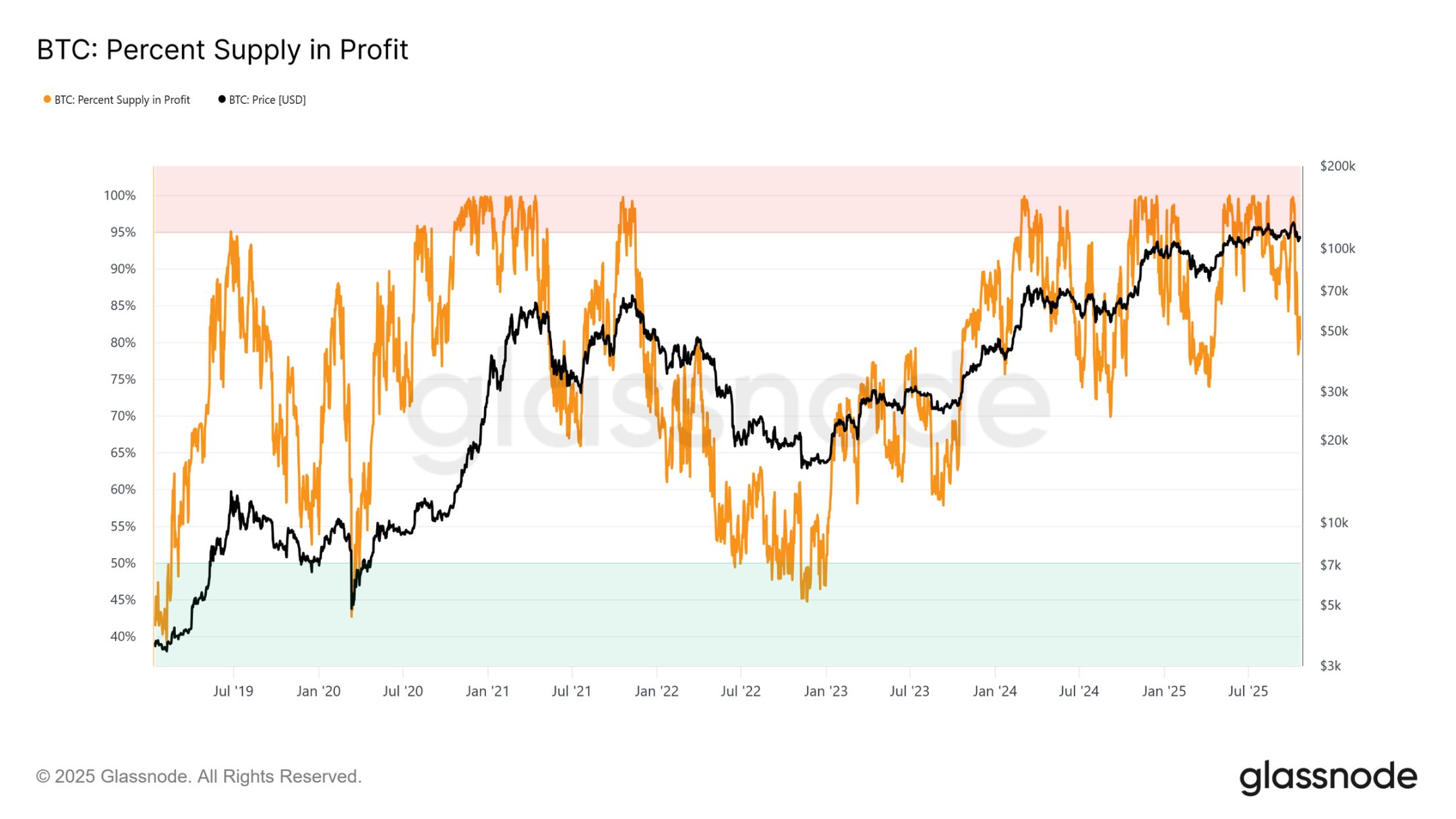
Key Thresholds
To further understand this structure, it is crucial to grasp why reclaiming the short-term holder cost basis is essential for maintaining a bullish phase. The supply quantile cost basis model provides a clear framework by mapping the 0.95, 0.85, and 0.75 quantiles, indicating the levels at which 5%, 15%, and 25% of supply are at a loss, respectively.
Currently, Bitcoin is not only trading below the short-term holder cost basis ($113,100) but is also struggling to stay above the 0.85 quantile at $108,600. Historically, failing to hold this threshold signals market structure weakness and often precedes a deeper pullback, pointing to the 0.75 quantile, which is currently around $97,500.
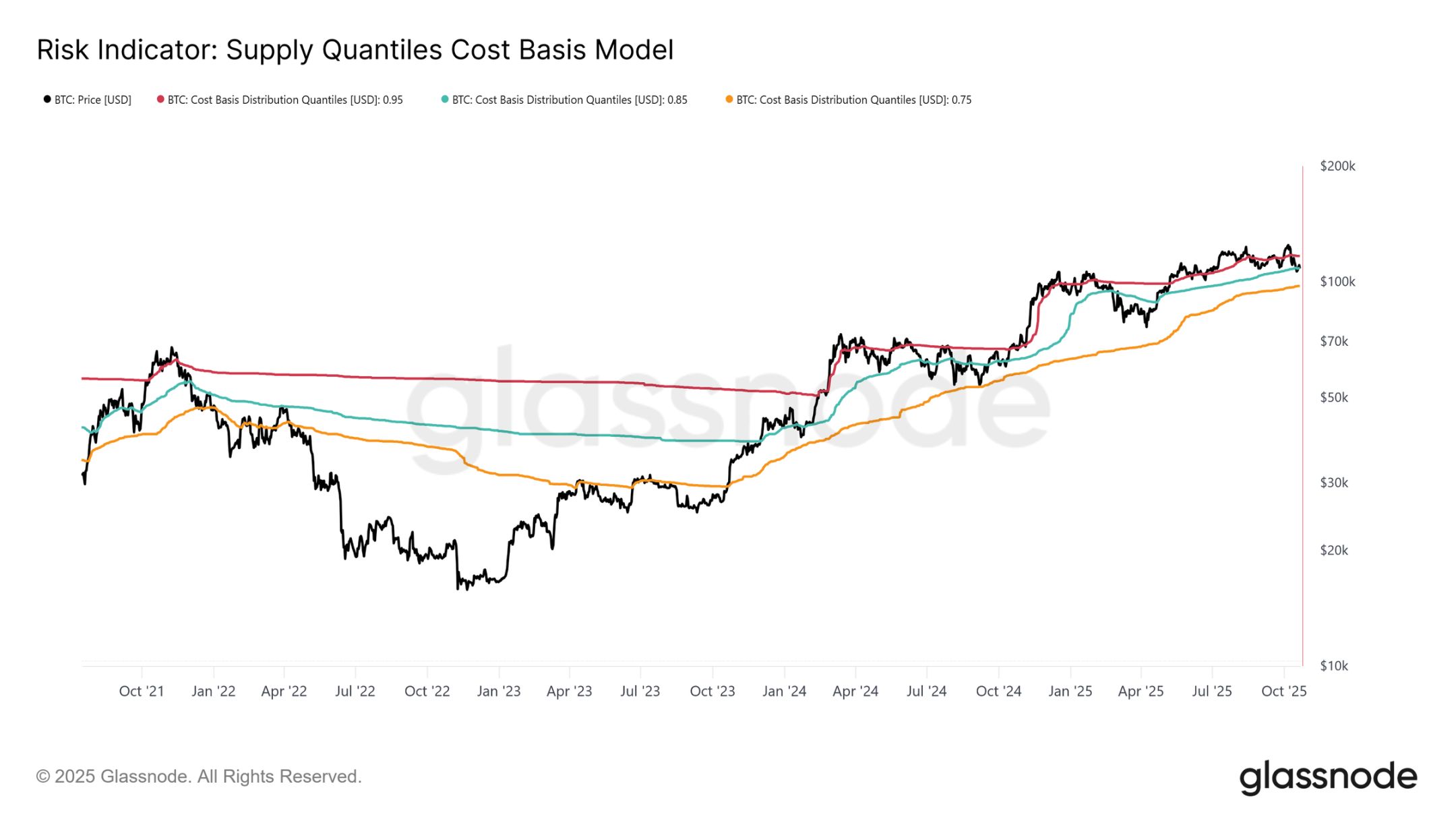
Demand Exhaustion
The third contraction below the short-term holder cost basis and 0.85 quantile in this cycle has raised structural concerns. From a macro perspective, repeated demand exhaustion suggests the market may require a longer consolidation phase to regroup.
This exhaustion becomes clearer when examining the volume of long-term holder spending. Since the market peaked in July 2025, long-term holders have steadily increased their spending, with the 30-day simple moving average rising from a baseline of 10,000 BTC to over 22,000 BTC per day. Such sustained distribution indicates profit-taking pressure from experienced investors, a key factor in the current market vulnerability.
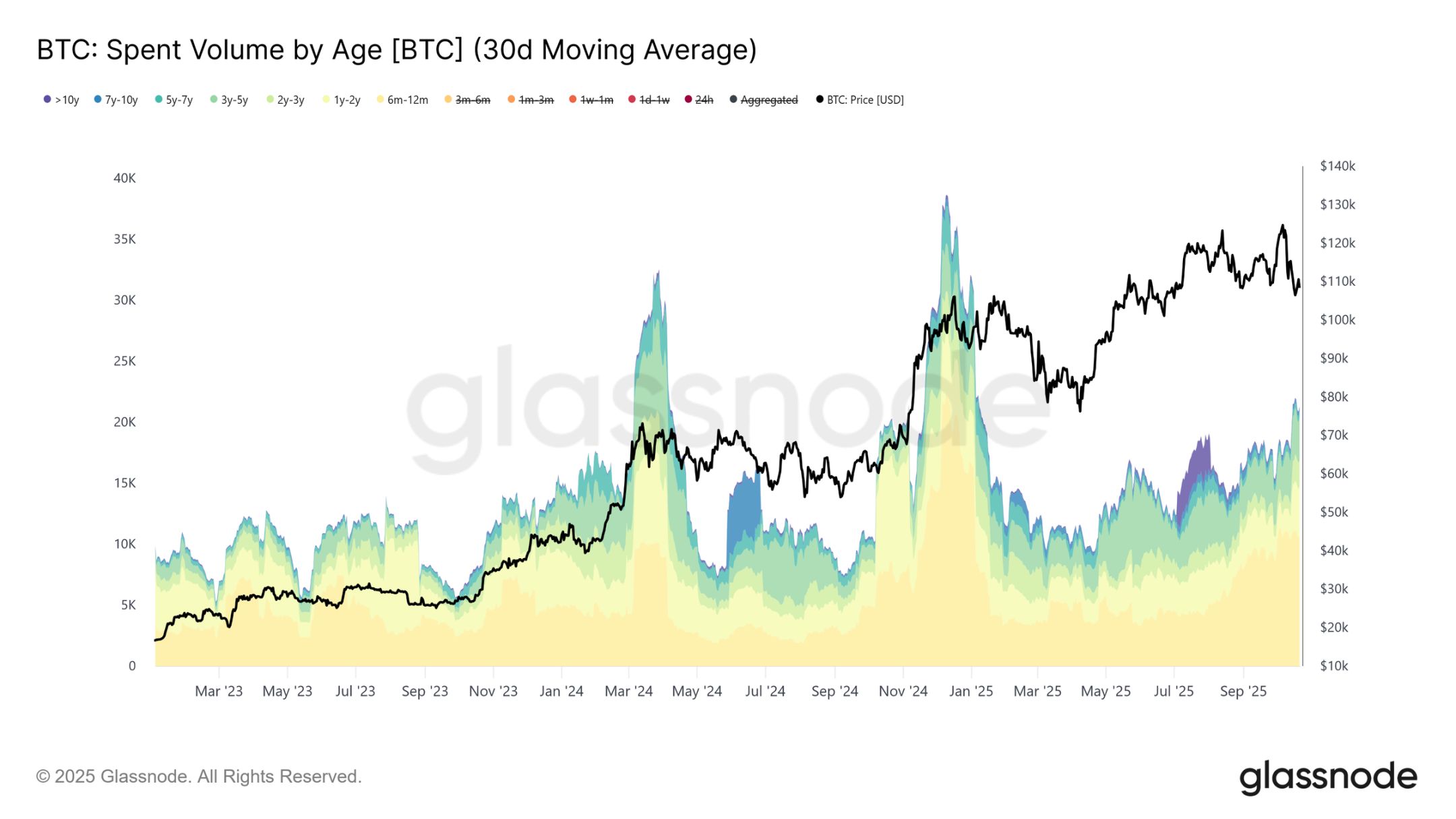
After assessing the risk that demand exhaustion could lead to a prolonged bearish phase, we now turn to the options market to gauge short-term sentiment and observe how speculators are positioning amid rising uncertainty.
Off-chain Insights
Rising Open Interest
Bitcoin options open interest has reached all-time highs and continues to expand, marking a structural evolution in market behavior. Investors are increasingly using options to hedge risk exposure or speculate on volatility, rather than selling spot. This shift reduces direct selling pressure in the spot market but amplifies short-term volatility driven by market makers’ hedging activities.
As open interest grows, price swings are more likely to originate from delta- and gamma-driven flows in the futures and perpetual markets. Understanding these dynamics is becoming crucial, as options positions now play a dominant role in shaping short-term market moves and amplifying reactions to macro and on-chain catalysts.
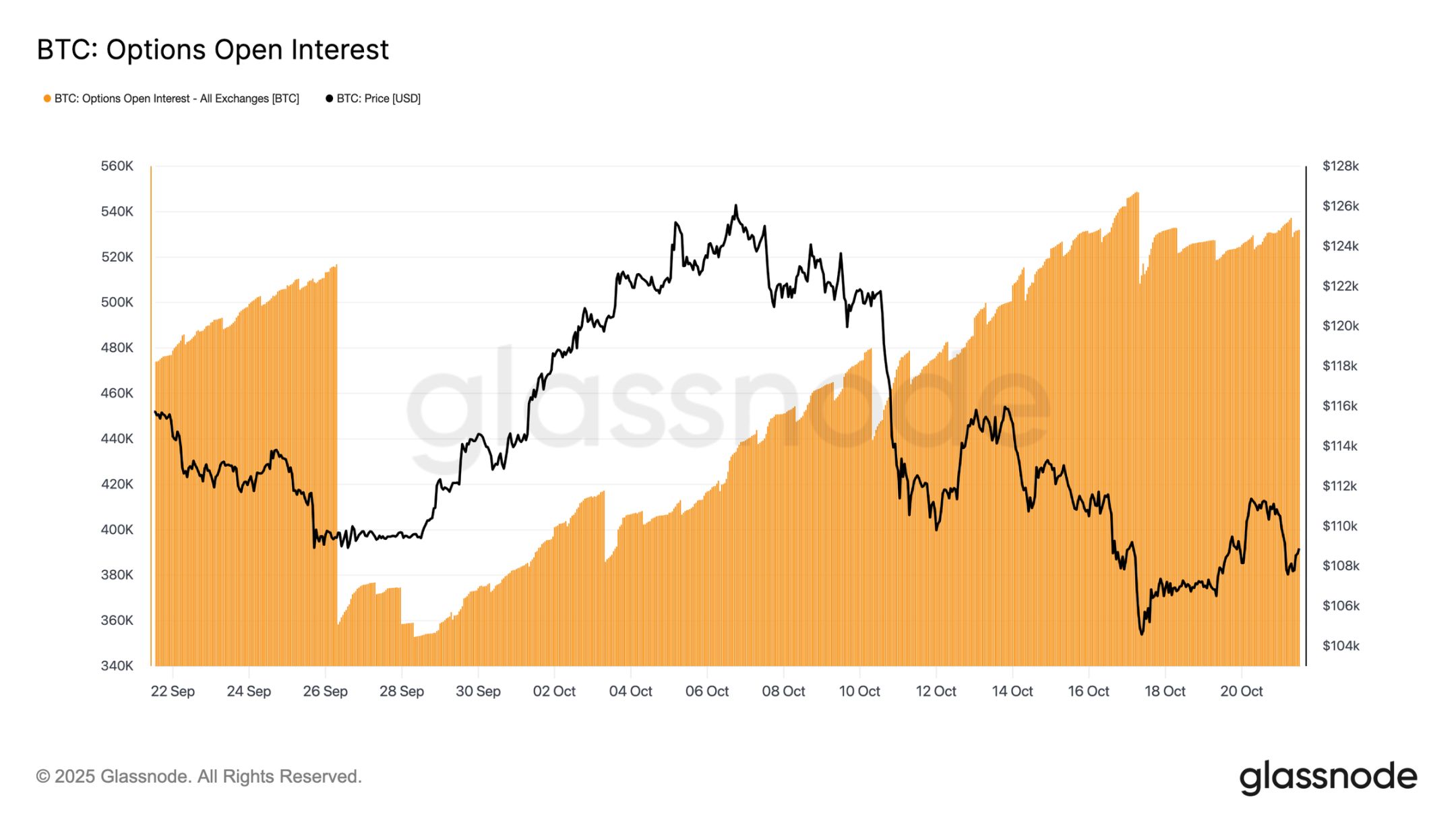
Volatility Regime Shift
Since the liquidation event on the 10th, the volatility landscape has changed significantly. Implied volatility is now around 48 across all tenors, compared to just 36-43 two weeks ago. The market has yet to fully digest this shock, and market makers remain cautious, not selling volatility cheaply.
30-day realized volatility stands at 44.1%, while 10-day realized volatility is at 27.9%. As realized volatility gradually cools, we can expect implied volatility to decline and normalize over the coming weeks. For now, volatility remains high, but this appears more like a short-term repricing than the start of a sustained high-volatility regime.
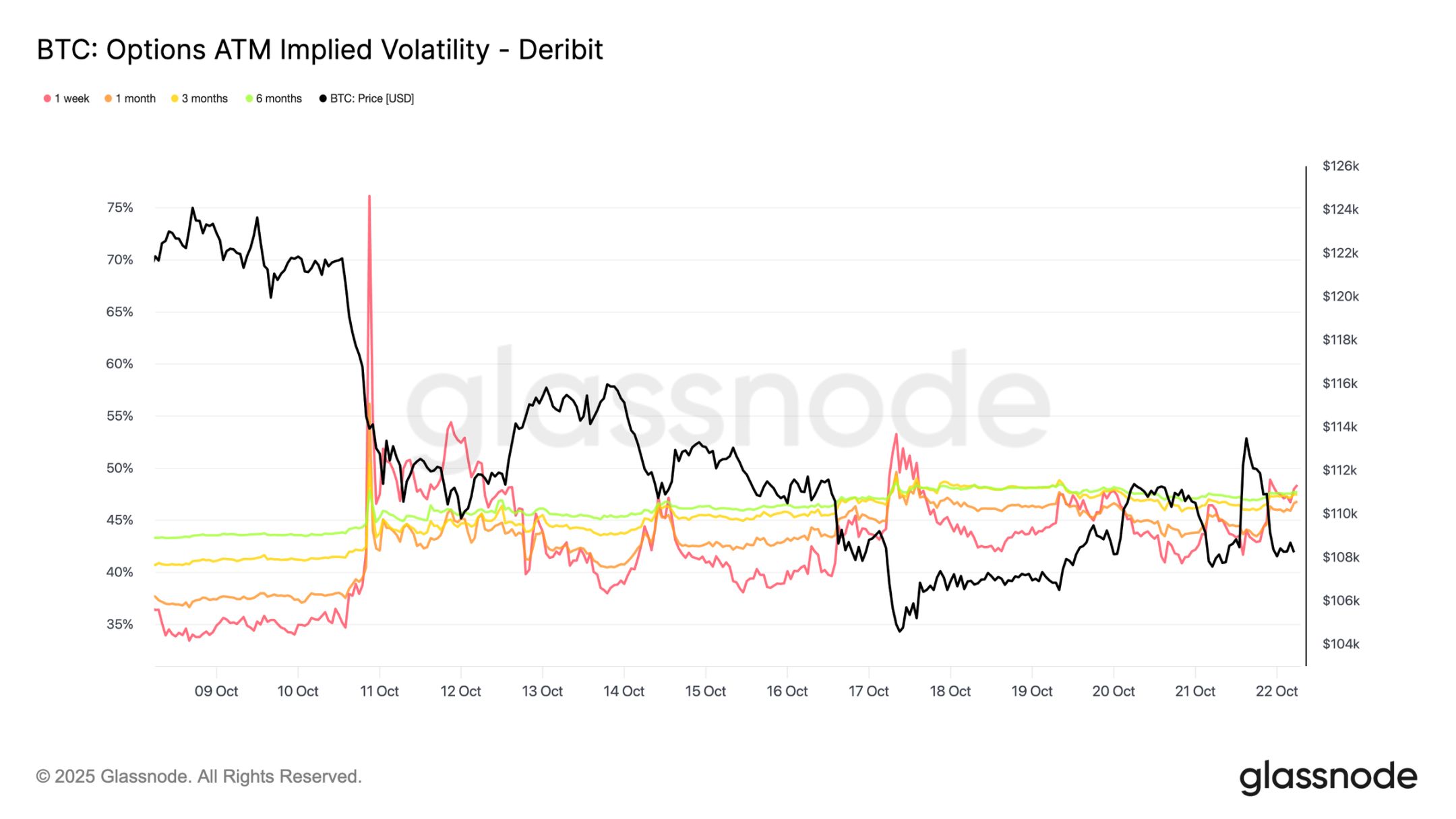
Put Option Intensification
Put options have steadily increased over the past two weeks. The surge in liquidations drove put skew sharply higher; although it briefly reset, the curve has since stabilized at structurally higher levels, meaning puts remain more expensive than calls.
Over the past week, the 1-week tenor skew has fluctuated but remained in a highly uncertain zone, while all other tenors have shifted 2-3 volatility points further toward puts. This broadening across tenors indicates that caution is spreading along the entire curve.
This structure reflects a market willing to pay a premium for downside protection while maintaining limited upside risk exposure, balancing short-term fear with a longer-term outlook. Tuesday’s minor rebound illustrated this sensitivity, as put premiums halved within hours, showing just how tense market sentiment remains.
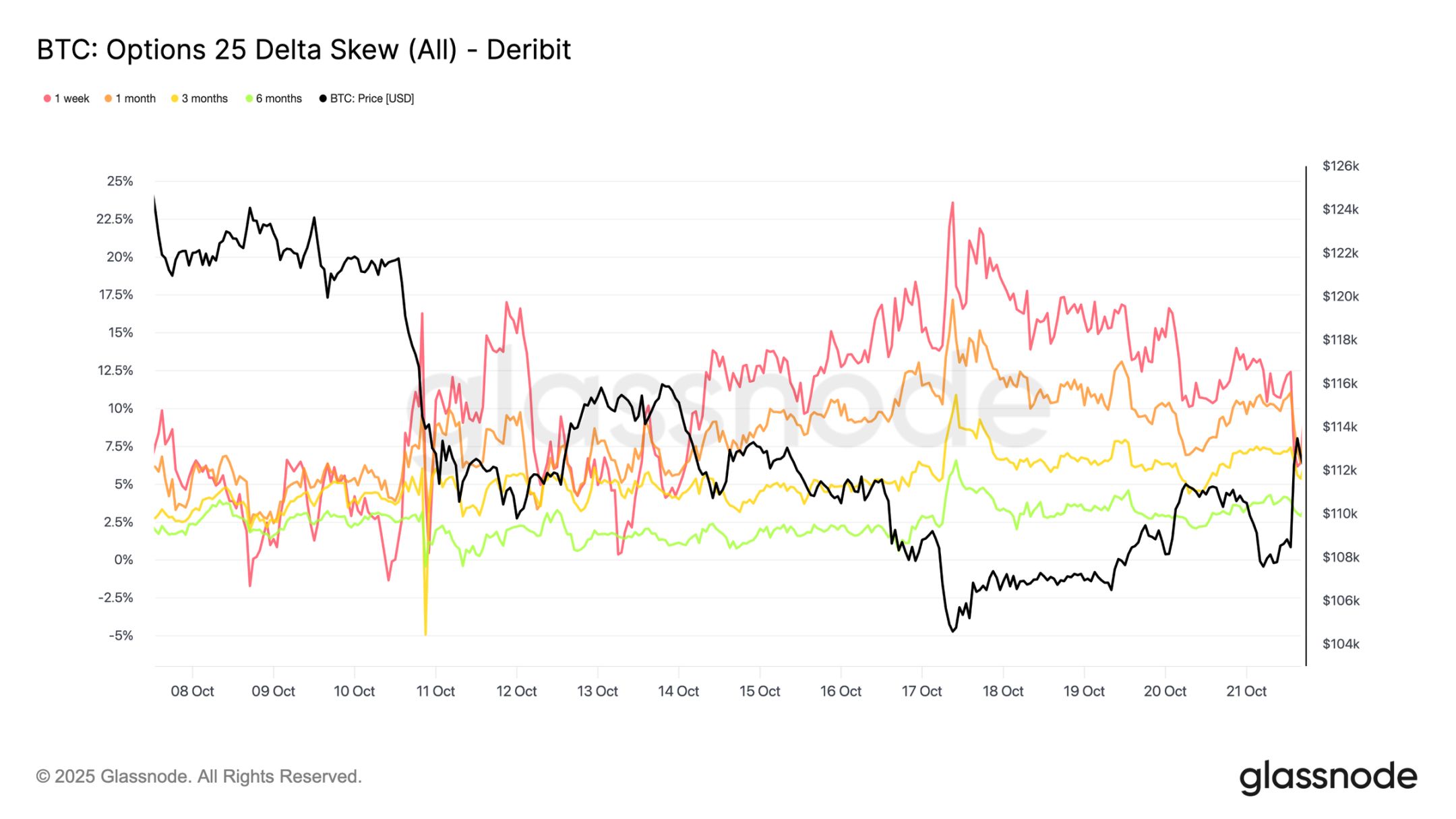
Risk Premium Shift
The 1-month volatility risk premium has turned negative. For months, implied volatility remained high while actual price swings were subdued, allowing volatility sellers to earn steady returns.
Now, realized volatility has surged to match implied volatility, erasing this advantage. This marks the end of the calm regime: volatility sellers can no longer rely on passive income and are instead forced to hedge actively in more turbulent conditions. The market has shifted from a quiet, complacent state to a more dynamic, responsive environment, with short positions facing increasing pressure as real price swings return.
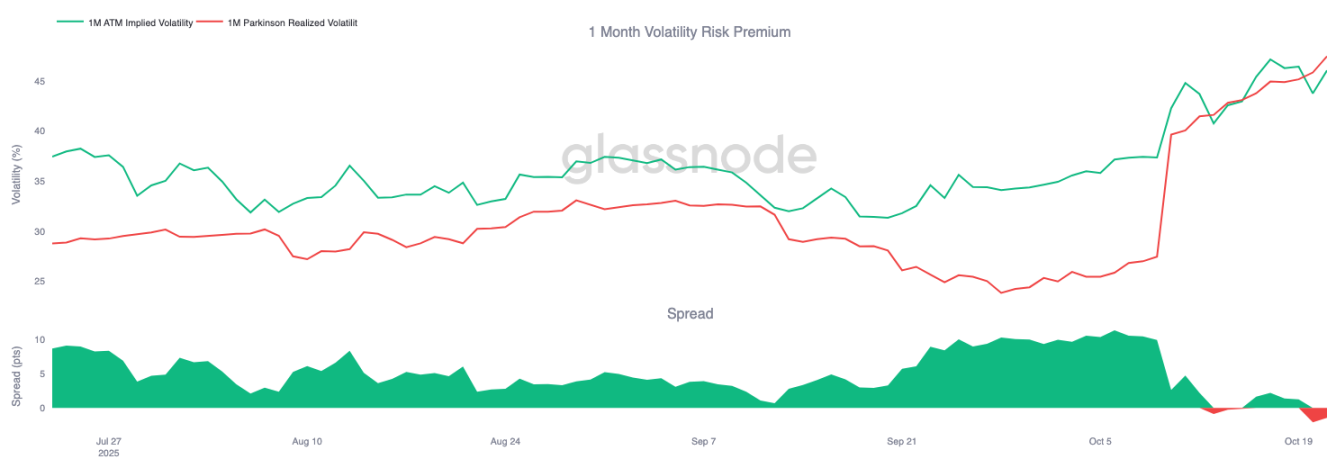
Defensive Flows Persist
To focus the analysis on the ultra-short term, we zoom in on the past 24 hours to observe how options positions have responded to the recent rebound. Despite a 6% price bounce from $107,500 to $113,900, call buying has provided little confirmation. Instead, traders have increased their put risk exposure, effectively locking in higher price levels.
This positioning leaves market makers short on the downside and long on the upside, a setup that typically leads them to suppress rebounds and accelerate sell-offs. This dynamic will continue to act as resistance until positions are reset.
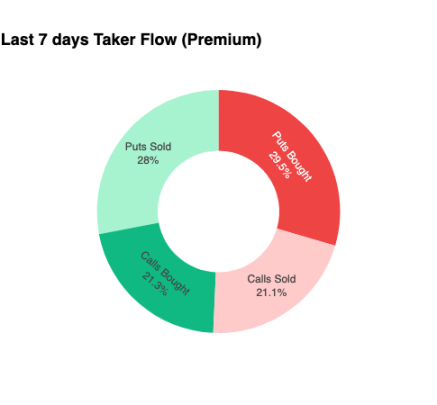
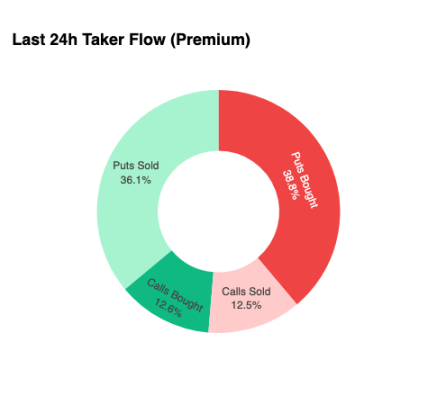
Premiums
Glassnode’s aggregated premium data, broken down by strike price, confirms the same pattern. At the $120,000 call strike, sold premiums rise as price increases; traders are suppressing upward moves and selling volatility during what they see as brief strength. Short-term profit seekers are taking advantage of the spike in implied volatility by selling calls during rebounds, rather than chasing the rally.
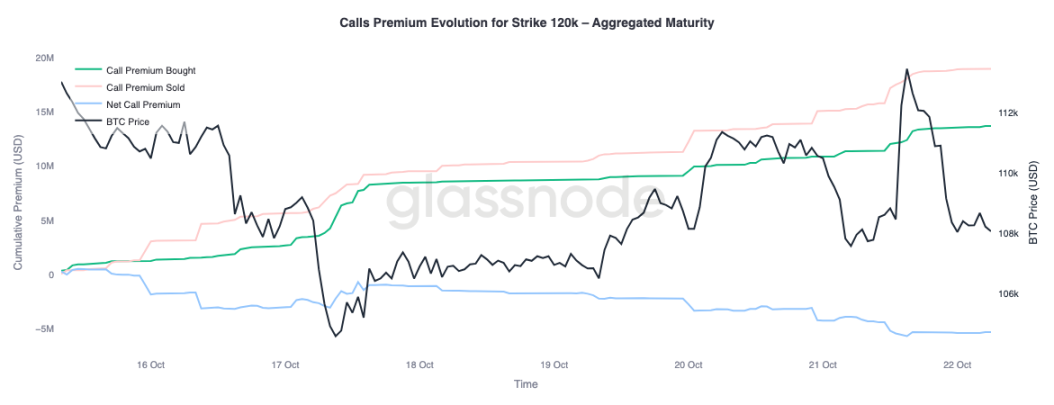
When observing the $105,000 put premium, the pattern is the opposite, confirming our argument. As price rises, net premiums for $105,000 puts increase. Traders are more eager to pay for downside protection than to buy upside convexity. This means the recent rebound has been met with hedging, not conviction.
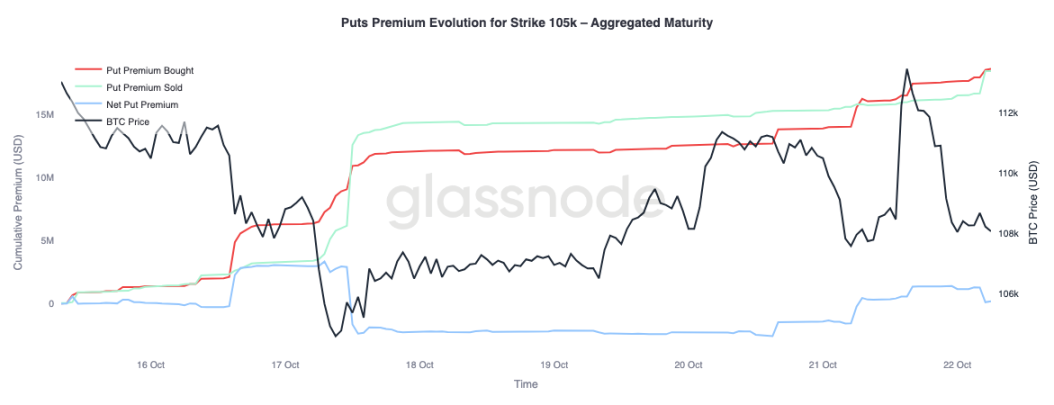
Conclusion
Bitcoin’s recent pullback below the short-term holder cost basis ($113,000) and the 0.85 quantile ($108,600) highlights growing demand exhaustion, as the market struggles to attract new inflows while long-term holders continue to distribute. This structural weakness suggests the market may require a longer consolidation phase to rebuild confidence and absorb the distributed supply.
Meanwhile, the options market reflects the same cautious tone. Despite open interest reaching all-time highs, positioning is defensive; put skew remains elevated, volatility sellers are under pressure, and short-term rebounds are met with hedging rather than optimism. In summary, these signals indicate the market is in a transitional period: a time when euphoria has faded, structural risk-taking is suppressed, and recovery may depend on the return of spot demand and a reduction in volatility-driven flows.
Disclaimer: The content of this article solely reflects the author's opinion and does not represent the platform in any capacity. This article is not intended to serve as a reference for making investment decisions.
You may also like
Experiencing the 10.11 crypto black swan and the CS2 skin market crash, I discovered the death trap of "middlemen"
You think you're profiting from arbitrage, but in reality, you're paying for systemic risk.
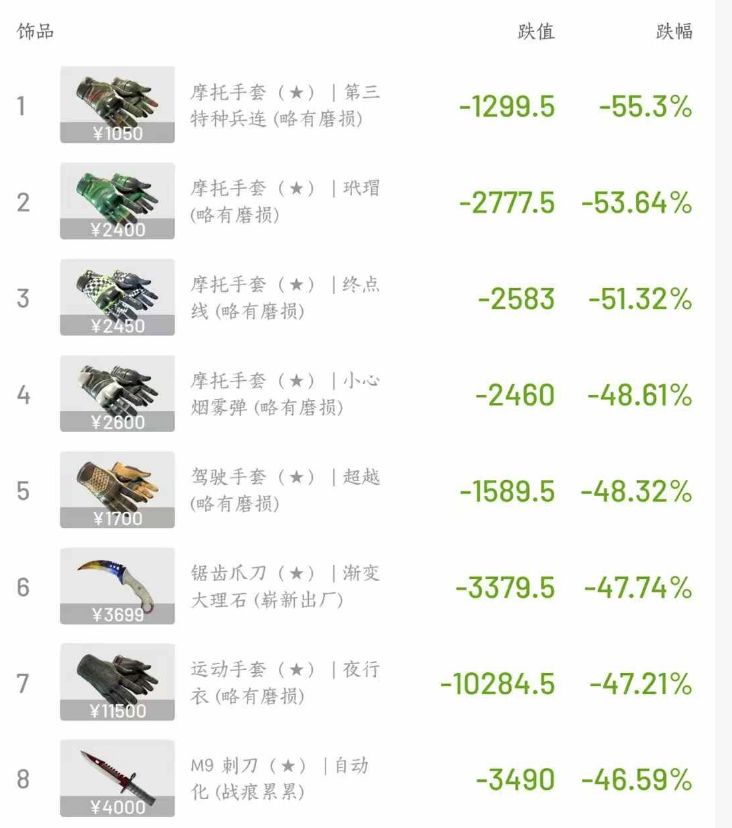
PENGU Eyes $0.027 Breakout as Accumulation Phase Strengthens

Shiba Inu Whales Pile In as SHIB Targets $0.0000235 Breakout

Ripple Completes $1.25B Hidden Road Acquisition and Officially Launches Ripple Prime for Institutional Clients

